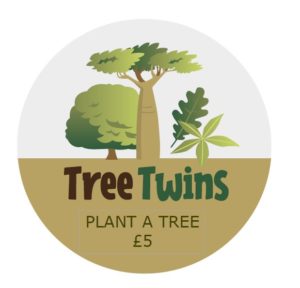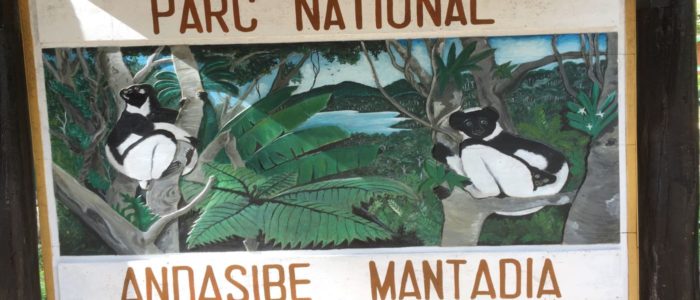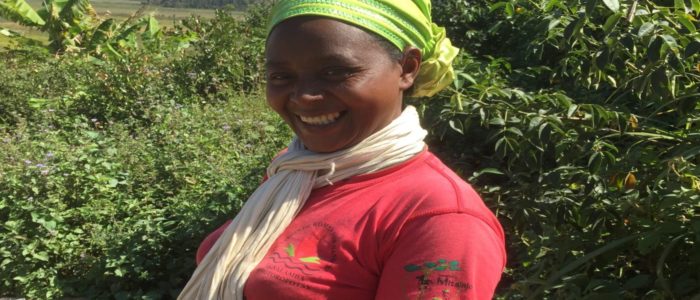Torotorofotsy Wetland, located near to the Andasibe Mantadia Natioanl Park, supports an exceptional level of biodiversity. Its mosaic of wetland and rainforest is home to iconic but critically endangered species such as the golden mantella frog, the greater bamboo lemur and the black and white ruffed lemur. In recent years, despite official protected status, the unique wetland and forests have been seriously degraded. MfM is working with local community association, Mitsinjo, to restore the unique rainforests in all their diversity and to support local families to feed themselves and improve their standard of living without needing to resort to environmentally destructive practices.
Since 2015, MfM has been working in partnership with Association Mitsinjo to gradually increase the area of restored forest around Andasibe at a rate of about 10ha per year. Reforestation work has provided vital employment opportunities for local people and environmental education has helped to raise awareness of the value of the forests. By planting corridors to join isolated fragments of primary forest, this project is extending the habitat for many endangered species.
What are the benefits so far?
In the areas already planted, reforestation has brought immediate benefits to the land in terms of erosion prevention and water absorption. In the longer term, Mitsinjo’s painstaking restoration technique provides the best conditions for the natural forest to regenerate. By using a mix of up to 60 carefully selected indigenous species, the Mitsinjo team harness the power of nature to complete the restoration process! By including a range of fast growing fruit trees, attractive to seed dispersers such as birds, fruit bats and lemurs, the Mitsinjo reforestation team ensure that wildlife is drawn to the replanted areas, bringing in seeds from other plants in their faeces and facilitating the return of the natural forest. Restoration of natural forest is not a fast process but replanted areas have seen the return of key indicator species such as the Blue Coua and brown lemurs.
The importance of livelihoods for long term success
MfM’s reforestation work with Mitsinjo has always considered the needs of the local population and has emphasised ensuring local employment in reforestation, protection and ecotourism. New funds in 2020 have made it possible to embark on sustainable livelihoods development in the hamlets of Sahatay and Sahakoa, in the Torotorofotsy buffer zone.
Supporting the development of sustainable livelihoods in these isolated communities is vital for the long-term success of Mitsinjo’s conservation and restoration efforts. 90% of the population living around the Torotorofotsy Protected Area are extremely poor and heavily dependent on the forest and wetland to meet their basic needs. Away from the eco-tourism hub of Andasibe village, they do not currently reap the obvious benefits of keeping the forest intact. However, without their support for forest restoration and conservation, unsustainable subsistence agriculture, wildlife poaching and illegal logging will continue unabated, transforming this unique ecosystem into rice fields and destroying its rich biodiversity.
We urgently want to scale up the pace of this important work and to increase investment in both reforestation and strengthening livelihoods as a long-term strategy to restore and protect the forest. Click Here if you are interested in helping us to do this.
The rationale of MfM’s project is to help families from the isolated and impoverished communities around Torotorofotsy to engage positively in forest restoration so that they have a stake in protecting the newly planted trees and to develop improved agricultural practices which will increase their yields whilst reducing pressure on the ecosystem. The project has three main strands:

Local tree planting team with Yousseff
Restoring the rainforest in all its diversity requires great care and attention. Local people are employed in the planting, maintenance and protection of indigenous trees giving them a positive stake in the future of the forest. Ysouffa, who is in charge of Mitsinjo’s nursery and responsible for reforestation, truly understands about trees and local ecology and is passionate about maintaining and restoring wildlife habitats. With the Mitsinjo team, he has pioneered the innovative reforestation technique and Association Mitsinjo are considered reforestation experts in Madagascar:
-
-
-
Seeds and Seedlings from between 60 and 100 indigenous species are collected from the wild; divided into categories according to growth rates and planted in the nursery.
-

River covering the road on the way to the replanting site
Tree species are selected according to various criteria including how popular they are with birds, fruit bats or lemurs. In fact, local wildlife plays an active role in the reforestation process by spreading seeds in their faeces. coming back.
-
To grow successfully, each seedling requires the help of special fungi that live in their roots. These fungi must be collected from the soil of the primary forest under at least 5 different plant families and it takes about 3 months to grow enough fungi for 10,000 seedlings.
-
Seedlings are nurtured and monitored in the nursery for up to 8 months before they are ready to be planted out. During this time the land is prepared for planting out.
-
Seedling are planted out to emulate the natural variation of the primary forest.
-

Planting out the seedlings
The newly planted areas are maintained (weeded and dead trees replaced) for at least the next 3 years, after which they are strong enough to continue growing.
-
Reforested areas are monitored in the long term.
In 2020, thirty-two families, from the hamlets of Sahatay and Sahakoa, in the Torotorofotsy buffer zone, have benefitted from training in improved sustainable agricultural practices to reduce the need for slash and burn farming.

Collecting new fruit trees
Training has included:
-
Sustainable techniques for cropping and livestock raising,
-
Compost production,
-
Establishing tree nurseries,
-
Tree planting
-
Forest restoration.
Each family has received the seeds, plants and equipment needed to establish more sustainable and productive agricultural systems. The families are benefiting from on-going technical support. 430 fruit trees have already been planted by 23 families. 500 quick growing timber species trees will be planted later in the year.

Preparing the land sustainably
These will benefit the families by
a) providing fruit as a source of nutrition and income and
b) reducing the need to cut down the native forest for timber and firewood. Each year we plan to reach more families, helping to improve lives and decrease the pressure on the forest.

Community meeting
Community members are all invited to attended awareness raising sessions on climate change and the importance of local forest and wetland ecosystems for supporting human life. They also learn about the unique value of their local environment and the long-term opportunities, such as eco-tourism, that arise from protecting the forest and the wetland.
Latest News and Appeals
Donate Now







 Cymraeg
Cymraeg
























